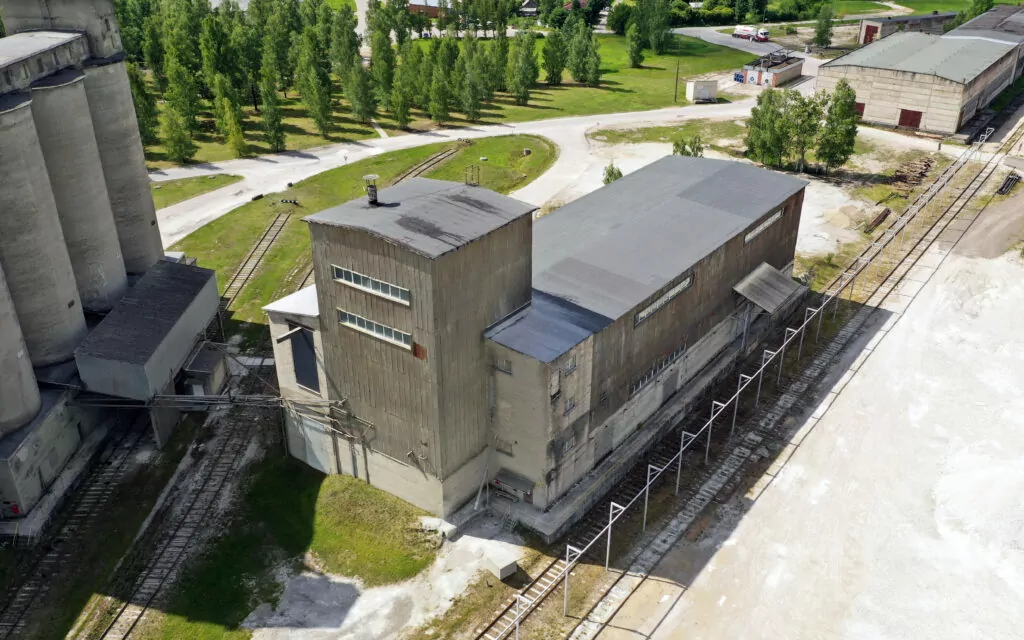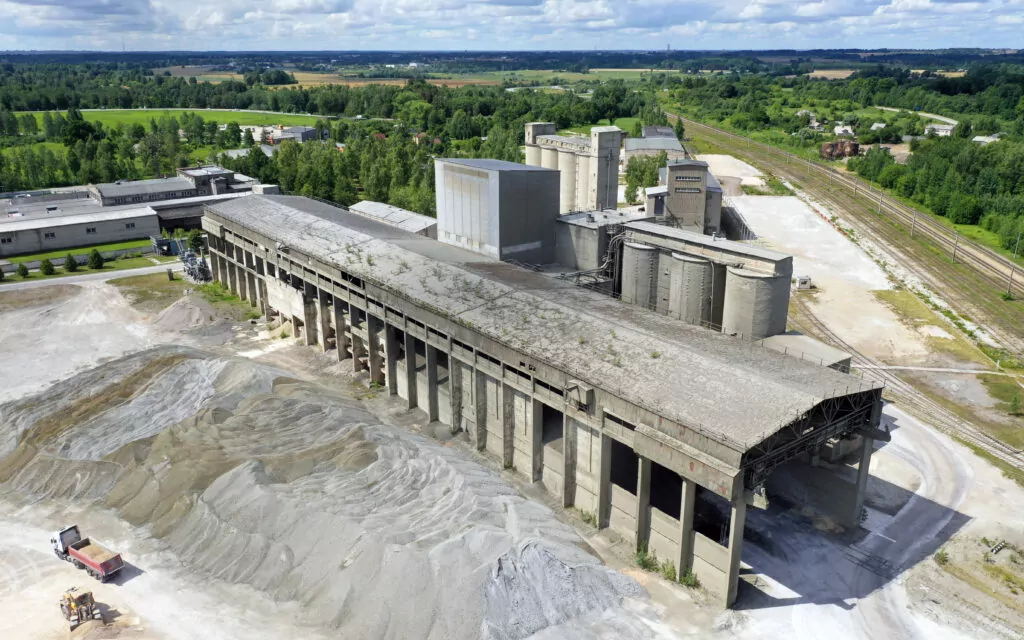Technical inspection of buildings and its legislation in Latvia
A building survey is the most effective method for the early identification and prevention of various deformations and damages that can occur over time in both residential and commercial structures. It is an essential part of property management, even for buildings that appear to be in good condition. In addition to the safety benefits provided by regular building surveys, Latvian law mandates that all buildings undergo a survey at least once every ten years.
To understand the regulations governing this process, it is essential to familiarize oneself with the key building regulations that define the technical standards and requirements for buildings. This article will delve into the most significant aspects of the Cabinet Regulation, pertaining specifically to building condition surveys and their procedures.

The significance of building condition assessments
The core purpose of a building condition survey is to assess the structural integrity and compliance of a building with current building regulations. Buildings are continually exposed to elements that can compromise their structural soundness. During a survey, both the primary structural elements and the building’s engineering systems, including facades and roofing, are inspected.
"Regular building inspections are particularly important for older buildings that are more susceptible to deterioration. Inspections are also mandatory before major renovations or when adapting a building for new uses (as per Section 9, subsection 1, point 3 of the Construction Law)."
Regulatory base
Latvian building code LBN 405-21 determines the procedure and content of the technical inspection of buildings, specifying how the technical condition of buildings is assessed, as well as defining the main terms and the distribution of responsibility between the parties involved.
A structural survey entails a visual inspection of the building's construction and elements to establish its current condition (clause 3.1). Where required, a more in-depth technical examination, potentially involving destructive testing, can be conducted to precisely ascertain the building's state and any damage (clause 3.2).
It is crucial to note that only certified building professionals or construction companies who have entered into a contract with the client are authorized to carry out these surveys (clause 3.3). To ensure a common understanding and compliance with regulations among all parties involved, the Ministry of Economics cooperates with standardization institutions to publish applicable standards that must be adhered to in building regulations (clauses 4 and 5).
In addition, building regulations allow anyone to carry out a visual check of a property. However, this is not the same as a full structural survey (as outlined in clause 6). A full survey ensures that the building is inspected according to all relevant standards and regulations, guaranteeing its safety and compliance.
Building Survey Procedures and Requirements in Latvia
The frequency and requirements for building inspections are governed by several regulations. According to building regulation LBN 405-21, periodic inspections (or main inspections) are mandatory throughout a building's lifespan to ensure its safety and compliance with relevant standards.
Periodic building inspections requirements:
- Structural surveys must be carried out for public and multi-storey residential buildings in the second and third categories. at least once every 10 years, to assess the mechanical strength, stability and safety of use of building structures (clause 9.1.1).
- On the other hand, bridges, road overpasses and other similar structures must be inspected more often, at least once every five years, to assess their condition and compliance with standards (clause 9.1.2). This inspection is carried out in accordance with standard LVS 190-11:2009 ‘Bridge Inspection and Load Testing’ (clause 11)."
Technical survey processes prior to construction:
A technical survey is also mandatory prior to significant alterations to a building, such as renovation, rebuilding, or restoration. In such cases, the survey is carried out according to the scope specified in the technical survey brief (clause 12). If the technical survey brief stipulates a technical investigation, it must be carried out to thoroughly examine the building's condition (clause 13).
A structural survey is essential to identify any unauthorized alterations and assess their impact on the building's load-bearing structure (Clause 10.3). This is a crucial step in ensuring the building's safety, sustainability, and compliance with all relevant regulations.

The significance and preparation of a technical inspection assignment
Tehniskās apsekošanas uzdevums ir būtisks elements ēku tehniskās apsekošanas procesā, kas reglamentē gan pasūtītāja, gan apsekošanas veicēja tiesības un pienākumus. Saskaņā ar būvnormatīvu LBN 405-21, tehniskās apsekošanas uzdevuma izstrāde ir neatņemama apsekošanas procesa sastāvdaļa, kas nodrošina, ka visi veicamie darbi ir precīzi definēti un atbilst normatīvo aktu prasībām (14. punkts).
The technical inspection brief shall specify the client, the scope, and level of detail of the inspection work to be carried out on the site, and the required deliverables, such as text, graphical, and photographic records (Clause 15). Particular attention shall be paid to ensuring that the report, if necessary, includes recommendations for remedying any identified defects and provides responses to the requirements set out in Article 9 of the Construction Law.
The client and inspector collaborate to define the scope of the technical inspection, ensuring compliance with regulations. This approach promotes efficient and effective inspections, safeguarding the building's safety and longevity
Duties of surveyors and commissioning parties in the process of Technical Surveying of buildings
In the process of a building condition survey, both the surveyor and the client play crucial roles. If the survey is conducted by a construction company, they appoint the surveyor and, if necessary, engage other specialists (Clause 17). The surveyor is responsible for gathering information about the building and selecting appropriate survey methods, in accordance with the requirements of the survey brief (Clause 18).
The client must give the inspector access to the building and provide any relevant information about its condition (Clause 19). If the inspector spots any dangers, they must let the client, the building owner, and the building control know straight away, giving them the address and details of the problem (Clause 20). This is to keep everyone safe and make sure we follow the rules.
Duties of surveyors and commissioning parties in the process of Technical Surveying of buildings
Tehniskās apsekošanas atzinumu apsekotājs sagatavo Būvniecības informācijas sistēmā, iekļaujot būtiskus datus par būvi un tās atbilstību Būvniecības likuma prasībām (21.-22. punkts). Atzinumā tiek vērtētas būves mehāniskā stiprība, stabilitāte, ugunsdrošība un citi faktori, kas var ietekmēt drošumu (22.4. punkts). Turklāt atzinumā tiek sniegti ieteikumi par pasākumiem, lai saglabātu vai uzlabotu būves tehnisko stāvokli (22.5. punkts).
The surveyor's report must include a detailed account of the work undertaken, the methods used, and the rationale behind the findings, enabling another building professional to verify the conclusions (clauses 23-24). If further technical investigation is required, but the parties have not agreed to this, the report should state the need for such investigation (clause 25). Additionally, relevant materials such as site plans, photographs, and other supporting documents should be attached to the report (clause 26).
The inspector provides a concluding assessment stating whether the building meets the requirements set out in the Building Regulations. If non-compliance is found, the inspector will detail the specific actions needed to address the issues (as stipulated in clause 27).
What can we infer from this?
Building inspections are more than just a box-ticking exercise; they are the cornerstone of safe and sustainable buildings. Latvian law requires regular inspections, and owners and managers must prioritize building maintenance. By doing so, they can avoid costly repairs and potential hazards.
We, BALTS UN MELNS team, are dedicated to providing high-quality services that deliver long-term value. Our design bureau conducts a comprehensive range of building surveys to assess the structural integrity and condition of buildings, their components, and installed services. All surveys are carried out in accordance with Latvian building regulations and result in a detailed technical report.
If you need an expert opinion on the technical condition of the building, contact our team!